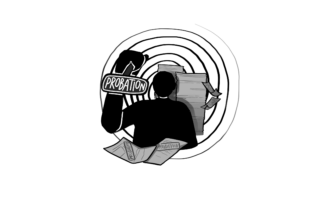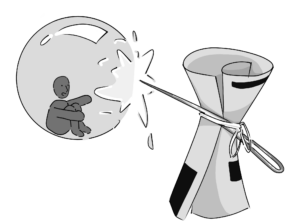Little over a month ago, Japan was shaken to the core with a magnitude 9.0 earthquake, one of the strongest in recent memory. The resultant tsunami created enormous waves across the Sendai coastline and the eastern shore of Japan, claiming hundreds of lives and abandoning many more amidst the rubble.
While this disaster may seem almost 6,000 miles away, minor repercussions in the Bay Area have prompted reconsiderations of our rather lax attitude towards earthquakes. The fact that Japan, a stable economic powerhouse, was nearly crippled by a natural disaster has shocked many Californians.
Another unfortunate truth is that California holds its buildings to inferior standards of earthquake engineering than Japan. Such structural safety does not bode well in the face of an earthquake. This revelation should be more than enough of a wake-up call to revise ineffectual earthquake preparation plans, particularly here at Aragon.
It should not be news to students that California is an incredibly earthquake-prone state due to its position over numerous faults. Seismologists have predicted a 99 percent chance of a major earthquake hitting California in the next 30 years.
Current earthquake procedure in SMUHSD schools falls under the category of a “Major Emergency/Disaster,” which also includes interruptions such as power outages, fires and storms. Students are required to remain at school or a safe site until it is deemed safe for dismissal. Recurring emergency drills throughout the year aim to help prepare students for such emergencies, but are not being taken seriously enough by many Aragon students.
Many students see drills as merely an opportunity to get out of class and talk with their friends on the field. Students place the avoidance of desktop gum in a much higher regard than actually paying attention to earthquake-safety measures. Students have adapted a false sense of security that does not bode well in the event of an actual earthquake.
Perhaps students are not the only ones at fault here. Some Aragon teachers tell their students about earthquake drills in advance to help schedule their lesson plans. But expected drills render null their desired benefit of testing students’ ability to react quickly and practically in an emergency. Earthquake drills do interrupt classes, and at their current state, it is understandable why teachers and students see them as nuisances. But the longer we perpetuate indifferent drills, the longer members of the Aragon community will be indifferent to the imminent threat of earthquakes.
Thus, a more efficient and serious drill must be adopted. Holding a single effective drill would benefit Aragon students far more than many brief drills. If students concentrated and listened during this one, extensive drill, Aragon as a whole would stand a far better chance against an earthquake.
Moreover, these initiatives should transcend the boundaries of Aragon. Earthquakes do not always strike in places where people have prepared; in fact, as disasters go, they are rather tempestuous. There is a greater chance that a student will experience an earthquake in his or her home instead of Aragon. Thus, an earthquake kit should be considered a household staple. They can be found for as little as $84 to feed four people for three days. These kits can be found at local and online stores, the latter of which makes survival after an earthquake just a few clicks away.
Furthermore, the 3.8 magnitude earthquake that occurred on Monday at 2:57 p.m. jolted the Outlook editors while writing this very editorial. And despite compiling information about earthquake protocol, we realized, to the tune of shaking computers and thumping above us, that we personally were no better prepared for an earthquake than we were before this information. The time to act is now, and we must act. Ultimately, your life can be in either your hands or the volatile temper of earthquake faults.
California is indeed a deceptively beautiful state. Beneath our verdant redwood forests and golden poppies lay myriad, active fault lines; seven major faults exist in the Bay Area alone. However, the crisis that would indubitably ensue following a major earthquake is no one’s fault but our own. Earthquakes may seem to be just another facet of our “Golden State,” but we must clear the fog of our indolence towards real, effective earthquake preparation.


